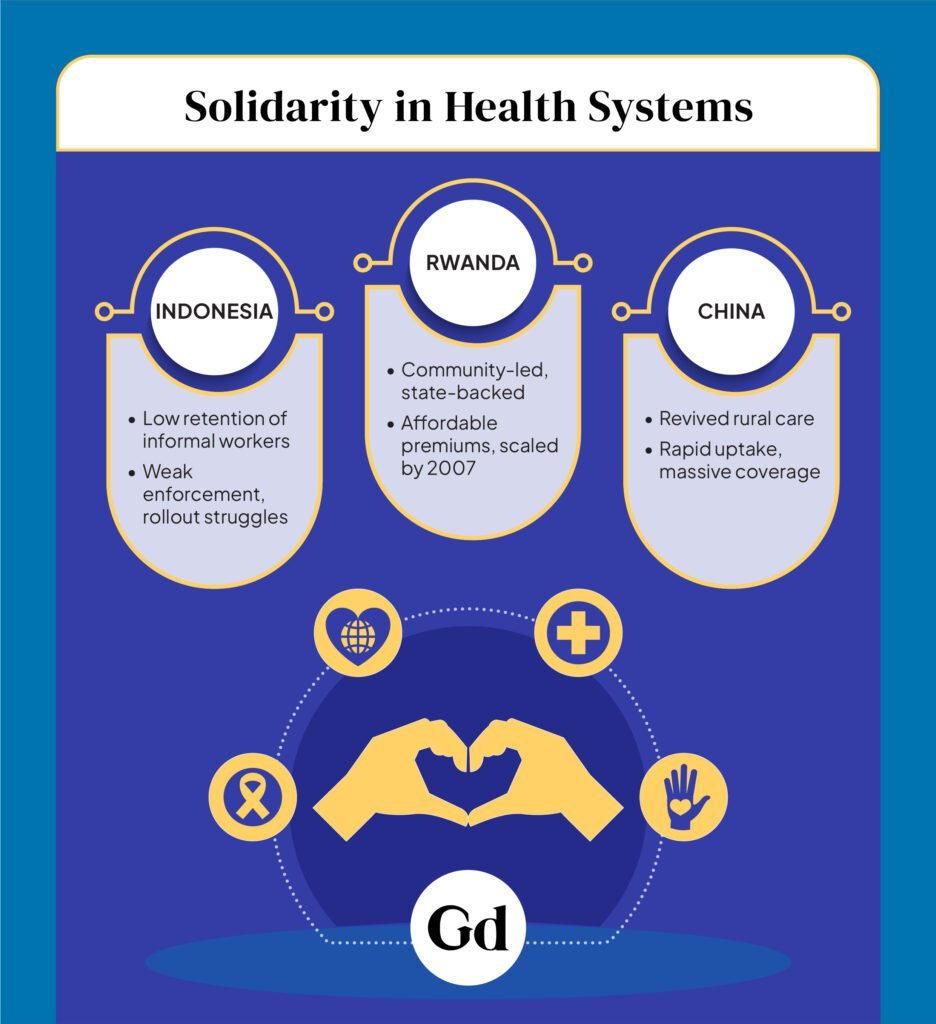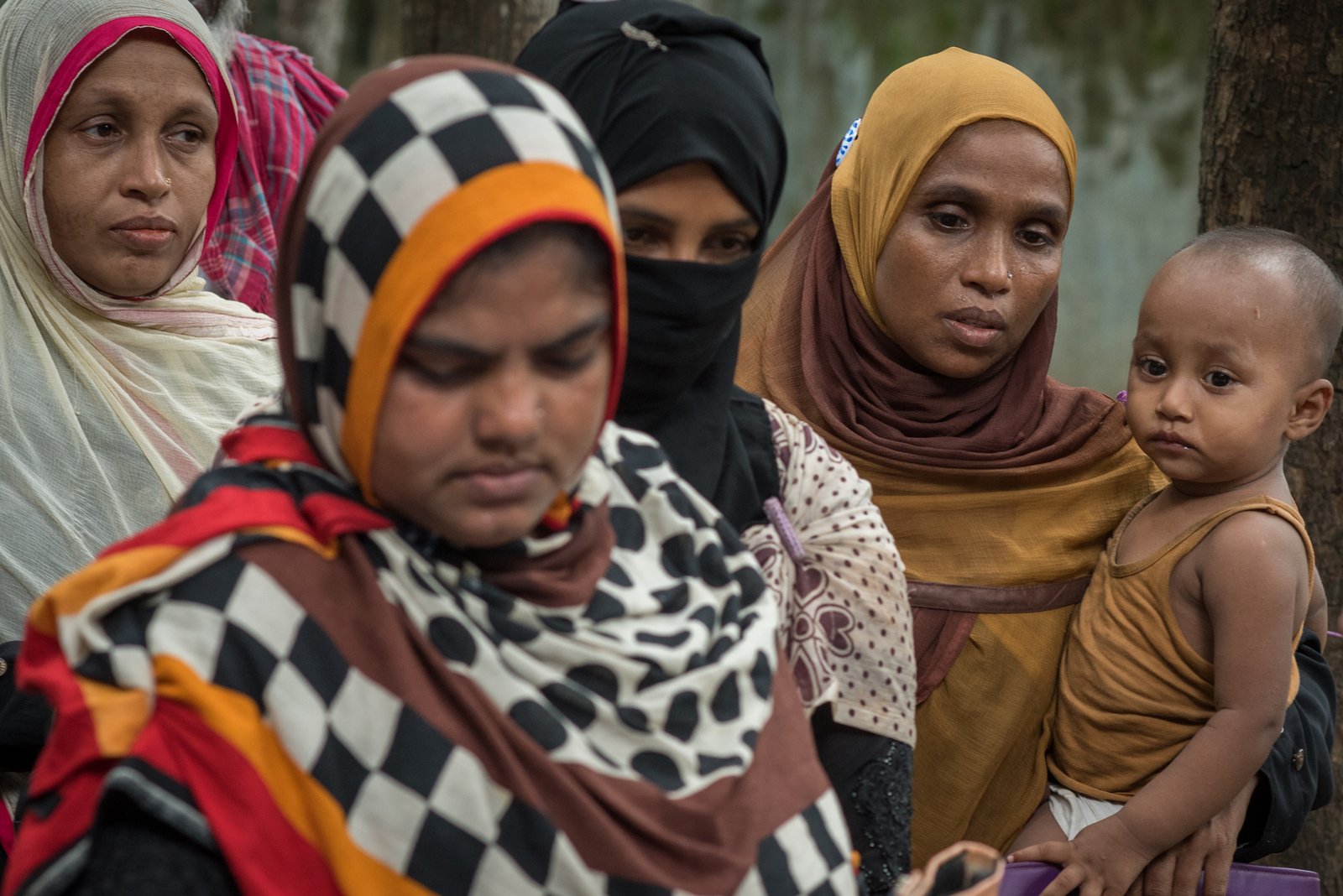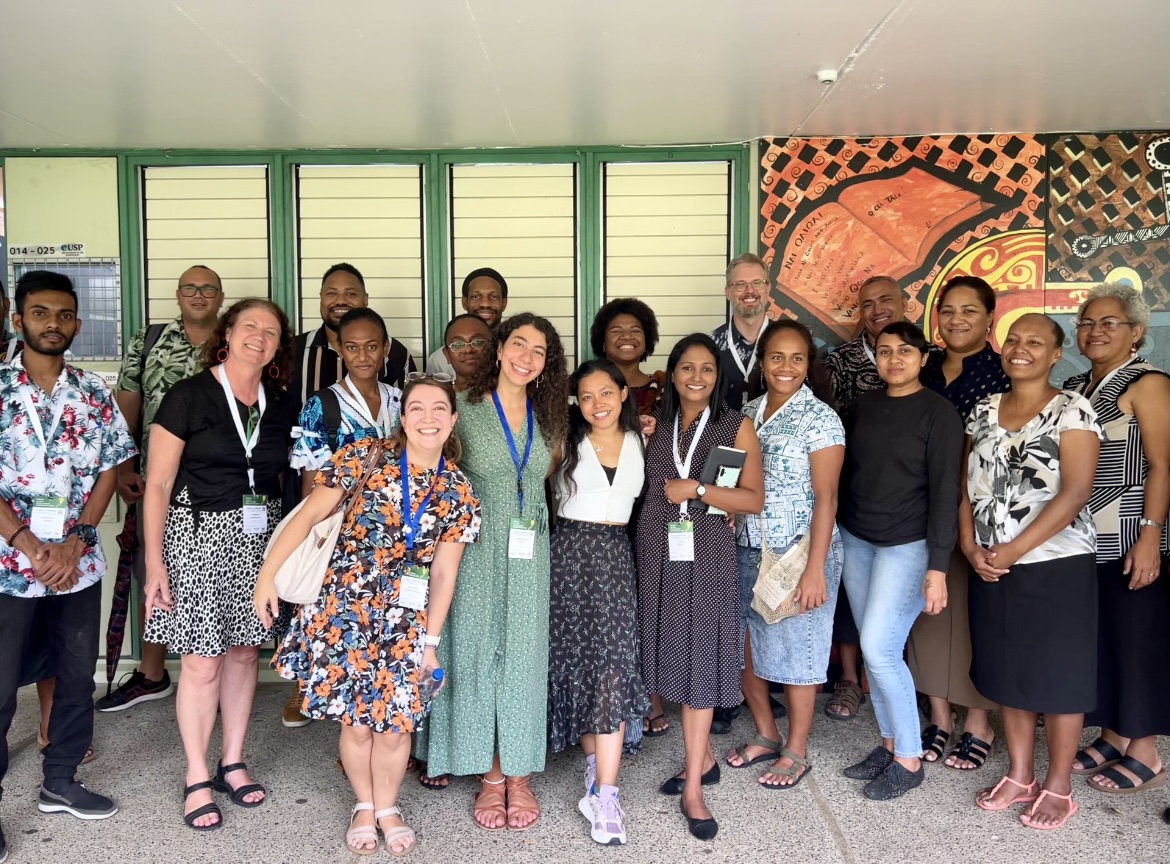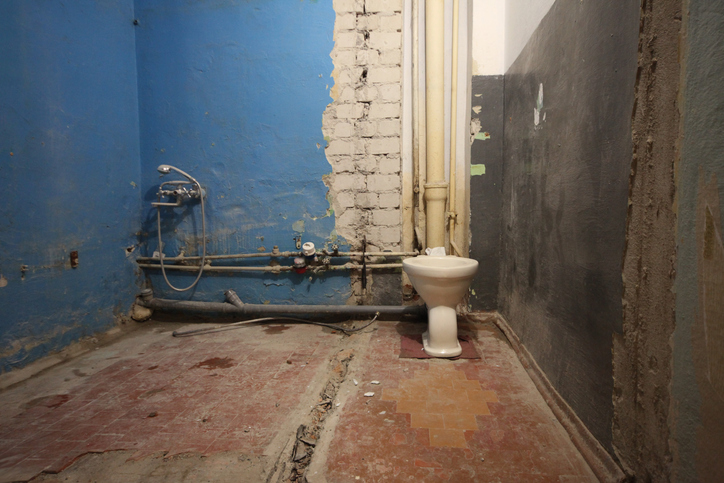Healthcare systems have changed substantially in recent years, particularly in lower-income countries. The article argues that while many nations have replaced community-led mutual aid systems with institutionalized frameworks like health insurance, it is worth re-visiting traditional approaches to service-delivery based on solidarity.
Over time, many societies have changed how they manage health risks and finance healthcare. Historically, communities managed health risks through mutual aid—villagers helped one another out of solidarity, not charity. Today, healthcare is largely financed through institutionalized systems such as health insurance, medical savings accounts, or government-funded programs. While these systems offer greater financial security, they have made healthcare feel more transactional and impersonal.
In the past, communities around the world managed health risks by pooling resources. In West Africa, for example, the traditional financing system known as Esusu provided a structured yet informal mechanism for financial security. Esusu group members contributed fixed amounts regularly, with the pooled sum going to one member per cycle. It relied on trust, offering emergency support without interest or collateral.
Similarly, in Indonesia, the traditional social institution called Gotong Royong played a central role within indigenous communities. It brought communities together to build infrastructure, farm, and support families during health crises. No money was exchanged, only labor and a sense of solidarity.
As societies urbanized, traditional networks of mutual aid gradually eroded. In their place, insurance systems emerged to pool risk more broadly and manage healthcare funds professionally. Across a range of services—from the UK’s publicly funded National Health Service (NHS) to the employer-sponsored insurance in the United States—bureaucratic structures replaced models rooted in community solidarity.
The consequences of this shift have varied. In market-oriented systems, like the United States, coverage gaps remain, especially for informal workers, gig economy participants, and the unemployed. In contrast, countries with stronger social security models like Germany and the Nordic nations pool contributions based on income and guarantee care based on need, preserving a principle closely aligned with traditional mutual aid.
Can modern systems revisit the idea of solidarity?
Several countries have attempted to reintroduce the idea of solidarity into modern health systems, but the outcomes have varied, often depending on whether the levels of social trust and administrative capacity are sufficient to support such a framework.
In 2014, for example, Indonesia launched its National Health Insurance (JKN) to achieve universal health coverage by pooling voluntary contributions across formal and informal sectors. Experts emphasized anchoring JKN in Gotong Royong, a traditional principle of mutual cooperation. This was not merely symbolic, but reflected a broader concern that, in the absence of strong state enforcement, the model’s success would depend on social solidarity and collective participation.
However, Indonesia had changed, and the necessary cultural foundations needed to sustain this model had weakened. Many informal workers enrolled in JKN only when they anticipated using its services and then dropped out later. This exacerbated the already-significant implementation challenges. As a result, the scheme lacked two pillars: the cultural glue of solidarity and the enforcement capacity of the state.
Rwanda provides a more successful case study. In 1999, the government launched Mutuelles de Santé, a community-based insurance model that gradually expanded nationwide. Households contributed a modest annual premium—around $7.50 per year— into local health funds, which were supplemented by government subsidies. Unlike top-down approaches, this model relied heavily on community participation. Local leaders were tasked with mobilizing enrollment, collecting contributions, and resolving disputes. Studies suggest that this sense of localized ownership, combined with strong political commitment, helped build trust and translate policy into sustained practice. By 2007, the scheme had become mandatory and was scaled nationally.
China’s rural health reforms had a similar path. In the 1950s, the Cooperative Medical Services (CMS) system used pooled village funds to support local health workers known as ‘barefoot doctors’, who delivered basic care and linked patients to township clinics. While the CMS was dismantled in the 1980s as part of wider economic reforms, its legacy remained in the collective memory of rural residents. When the government introduced the New Rural Cooperative Medical Scheme (NRCMS) in the early 2000s, it tapped into these historical experiences. Villagers were already familiar with resource pooling and care from local community providers. Though more formalized, the NRCMS built on a familiar foundation, which helped facilitate its adoption. The program ultimately played a key role in restoring healthcare access for hundreds of millions in China.

The road ahead
These experiences reveal a critical insight: successful health financing reform is not just about raising funds or designing technical solutions, but also about rebuilding trust. Indonesia’s challenges reflect what happens when reforms are introduced without either strong state capacity or a shared social contract. In contrast, Rwanda and China demonstrate that leveraging local institutions, cultural memory, and community networks can help overcome limitations in enforcement and expand participation.
To build efficient healthcare systems—especially in low- and middle-income countries—policymakers should adopt a bottom-up approach rooted in existing community assets. Strengthening social capital can improve health policies, while mutual aid strategies help meet survival needs, promote participation, and foster new social relations. Grassroots movements have long influenced health reforms, addressing immediate needs while also pushing for universal care. Labor unions have historically advanced health equity by addressing structural inequalities at workplaces, which are critical arenas for public health. Finally, strong social cohesion based on trust, connection, and shared norms improves crisis-era community governance. These foundations can serve as platforms for contribution, oversight, and communication, which policymakers integrate into broader financing systems with targeted subsidies and administrative support. As healthcare demands evolve, revisiting the traditional principles of solidarity may offer a valuable guide for policy design.






